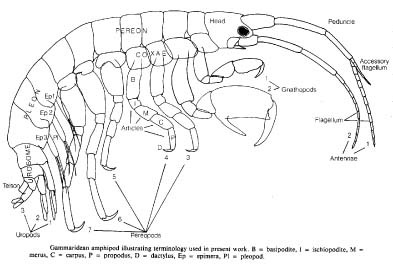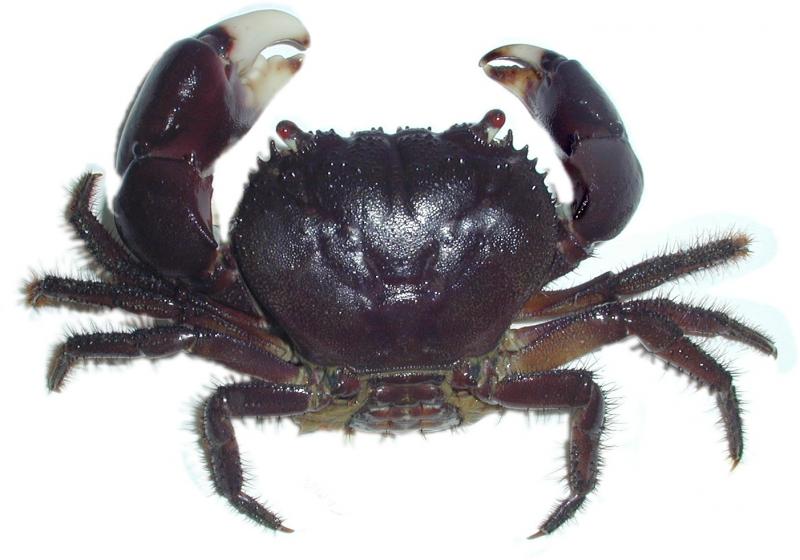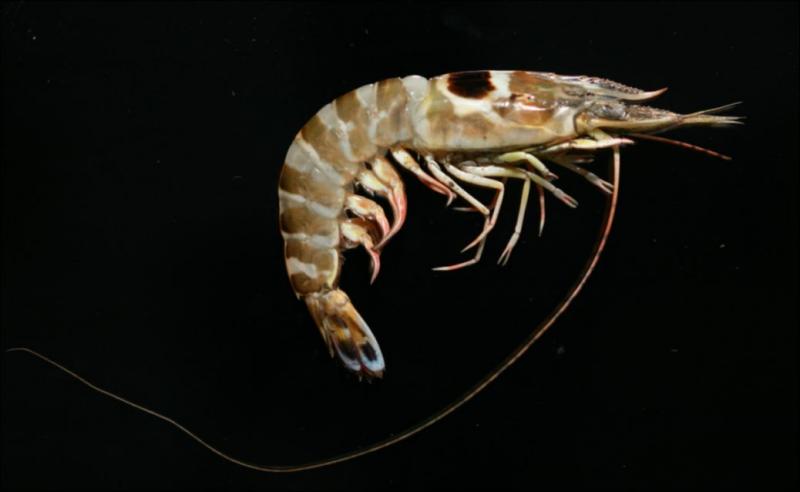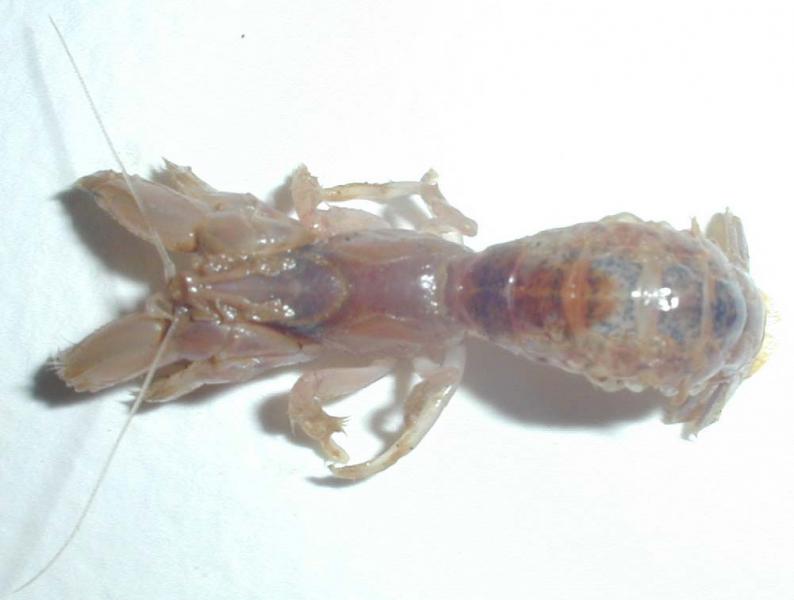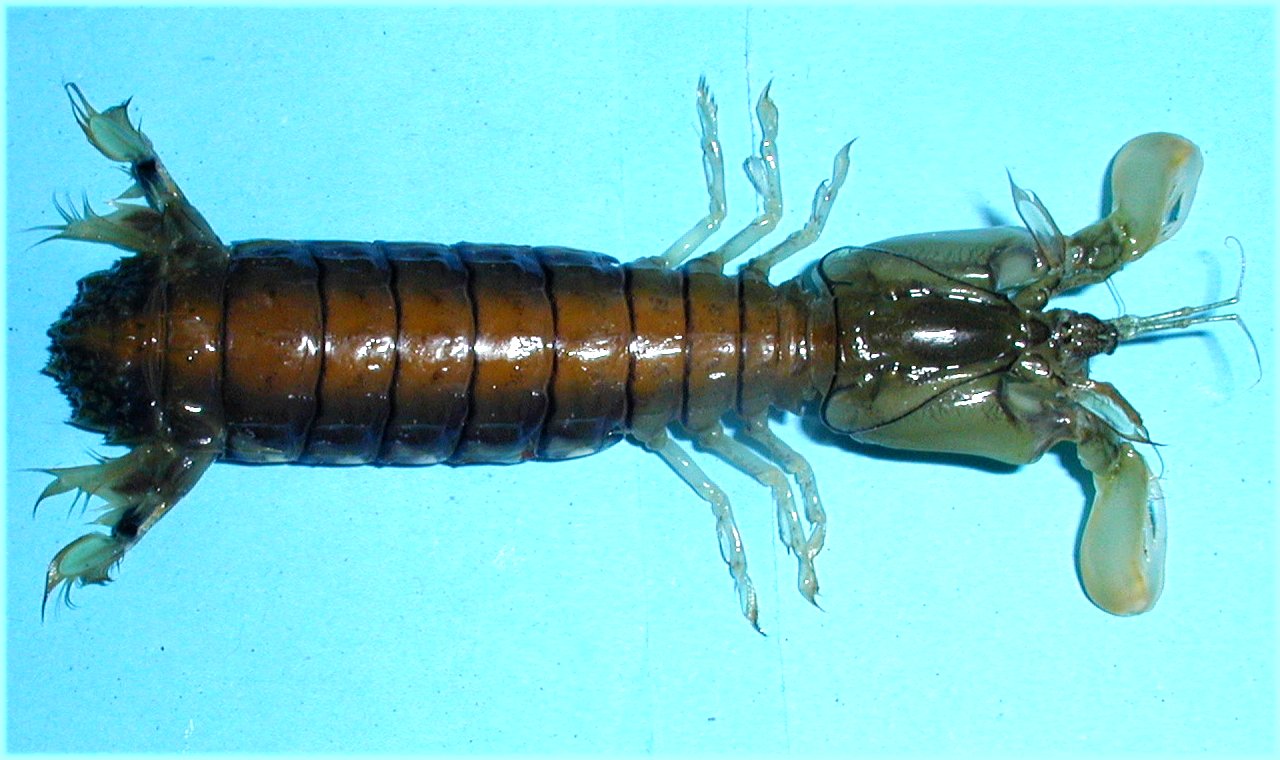The Crustacea are related to the Insecta, Arachnida (spiders and ticks) and Myriapoda (centipedes and millipedes); they are arthropods. The Arthropoda share a number of characters including a hard exoskeleton, bilateral symmetry and jointed legs. Crustaceans are predominantly marine or have to return to the sea to hatch their eggs, but some species are parasitic, terrestrial or found wholly in freshwater. Defining this extremely diverse group is difficult, but one character that separates most of the Crustacea from the rest of the arthropods is the possession of two pairs of antennae (“feelers”), the antennules and the antennae. In general the body is divided into three regions, the cephalon (head), the thorax and the abdomen (tail) each with jointed limbs that are adapted for a wide range of functions such as feeding, sensing, reproduction and locomotion. Growth is restricted by the hard exoskeleton and can only occur during a moulting cycle when the outer shell is cast off (ecdysis). While the new exoskeleton is soft the animal increases in size. The life cycle usually involves a free swimming planktonic larval phase. The Crustacea are divided into many groups (taxa) but only the Amphipoda, Cirripedia (barnacles), Decapoda, Isopoda, Stomatopoda (mantis shrimps) and the Tanaidacea are reviewed in this site.

